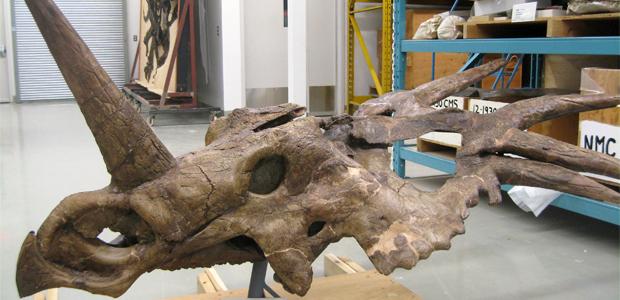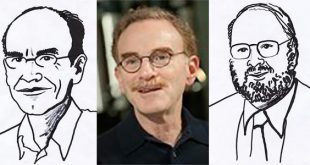The skulls from some of the largest plant-eating dinosaurs to be unearthed at Dinosaur Park may help researchers understand how so many of the mega-sized creatures thrived alongside each other.
The skulls from some of the largest plant-eating dinosaurs to roam through Alberta may help researchers understand how so many of the mega-sized creatures were able to thrive alongside each other – in the 1.5 million years that it was frequented, nearly 20 different species have been unearthed.
Measuring more than 80 skulls, from 12 different megaherbivore groups that once called the region home – roughly 75-million years ago during the Late Cretaceous – the Canadian team found adaptations that allowed them to munch on dinner, without encroaching on their neighbors’.
“These dinosaurs were able to co-exist together because they practiced a strategy called niche partitioning,” Jordan Mallon, study co-author and post-doctoral fellow at the Canadian Museum of Nature, told SciFare.com. “They ate different foods, so they avoided competing with each other.”
At any given time, at least six of the giant dinosaurs roamed the region that would eventually become the world famous, Dinosaur Park Formation. Broadly, they fall into three families – ankylosaurs, ceratopsids and hadrosaurs – with, on average, two of each living together at any one time.
We may never know what the giant dinosaurs dined on – weighing in at more than 1,000 kilograms, it was probably a lot though – but researchers said their differences all hint at ways they’ve adapted to getting the most out of their meal. They all got there a little differently too.
Between the two types of armour-coated, tank-like ankylosaurs – distinguished from each other by the presence of a club on the end of their tail – researchers found differences in the jaws the clubless nodosaurids that may have enhanced their ability to chew, relative to the clubbed ankylosaurids.
“They’re positioning their jaw-closing muscles further away from their jaw joint and that increases the mechanical efficiency of the system,” Mallon said. “For every unit of force their muscles are exerting, they’re getting out a higher percentage of force at the bite point than an ankylosaurid.”
The researchers said that having a more efficient jaw may have allowed the nodosaurids to break down and digest tougher plant material than their clubbed relatives.
When the researchers took a look at the two types of ceratopsids – they can be divided, broadly, based on whether or not they’ve got horns above their eyes – they found differences in the thickness of their snouts.
“The idea is that if [there’s] a taller snout, that might have been a means for resisting bending stress while the animal’s chewing,” Mallon said.
With a thicker snout than the chasmosaurines – they’re the ceratopsids that have horns above their eyes – the rhino horn-like centrosaurines may have been able to deal with the stress of eating tougher plants, in the same way that a short, thick beam is more resistant to breaking than a long, thin one.
For the duck-billed hadrosaurs, researchers said differences in the size of the lambeosaurine skulls – beyond the hollow headgear that separates them from their hadrosaurine relatives – may have allowed the tallest megaherbivores to each carve out their own niche.
“If you have two species and one is larger than the other by a factor of 1.3, you can facilitate resource partitioning based on size alone,” Mallon said. “The larger size allowed them to basically overtake a new niche.”
Technically known as the Hutchinsonian ratio, it’s a recurring number in biology that’s allowed numerous researchers to better understand how two very similar creatures can thrive alongside each other, without the modifications to the shape of their skulls like the ankylosaurs and ceratopsids.
“It might have allowed the hadrosaurines to subsist on a more fibrous diet,” he added.
That’s because everything else about the hadrosaurines would be 1.3 times larger too. With larger muscles they’d have a larger bite force and with a larger digestive tract, they’d have more time to digest less desirable food.
When all these creatures were alive, a shallow sea split North America in half lengthwise and covered most of the continent between Alberta and Ontario, so understanding how they all thrived alongside each other in a relatively small amount of space is interesting to Paul Barrett.
The researcher at the Natural History Museum in London said he’s been waiting to see the analysis for some time.
“This work shows convincingly that plant-eating dinosaurs living in the same environments had differences in skull shape and presumed feeding behaviour,” Barrett, who’s also the Co-Senior Editor of the Journal of Vertebrate Paleontology, told SciFare.com. “That allowed them to exploit the available vegetation in distinct ways.”
“Although this has been suggested before, this is one of the few studies to examine this in detail and quantitatively,” Barrett added.
The research was published in the journal, PLOS One.
 Science Fare Media Science News – Upgraded
Science Fare Media Science News – Upgraded



